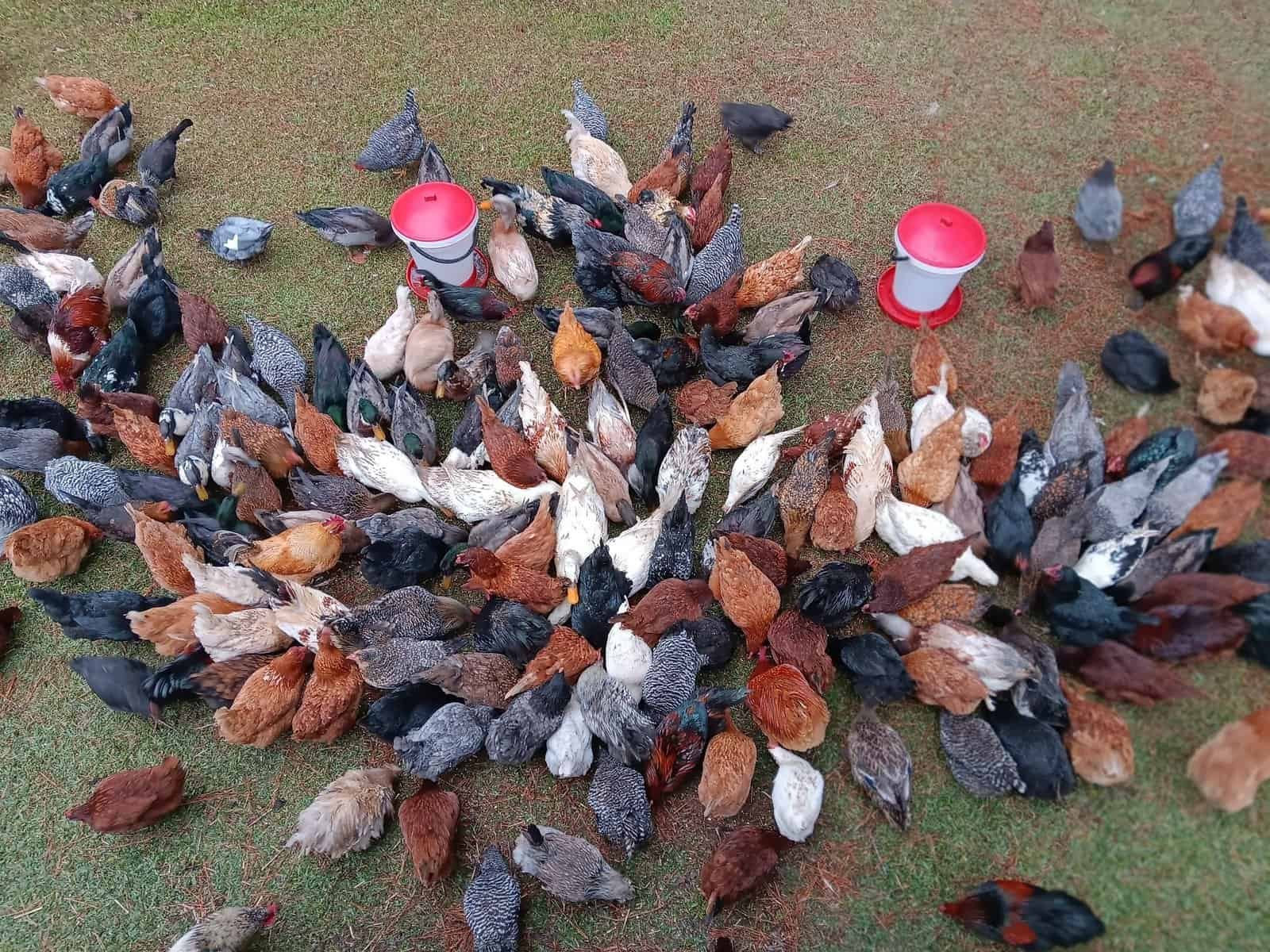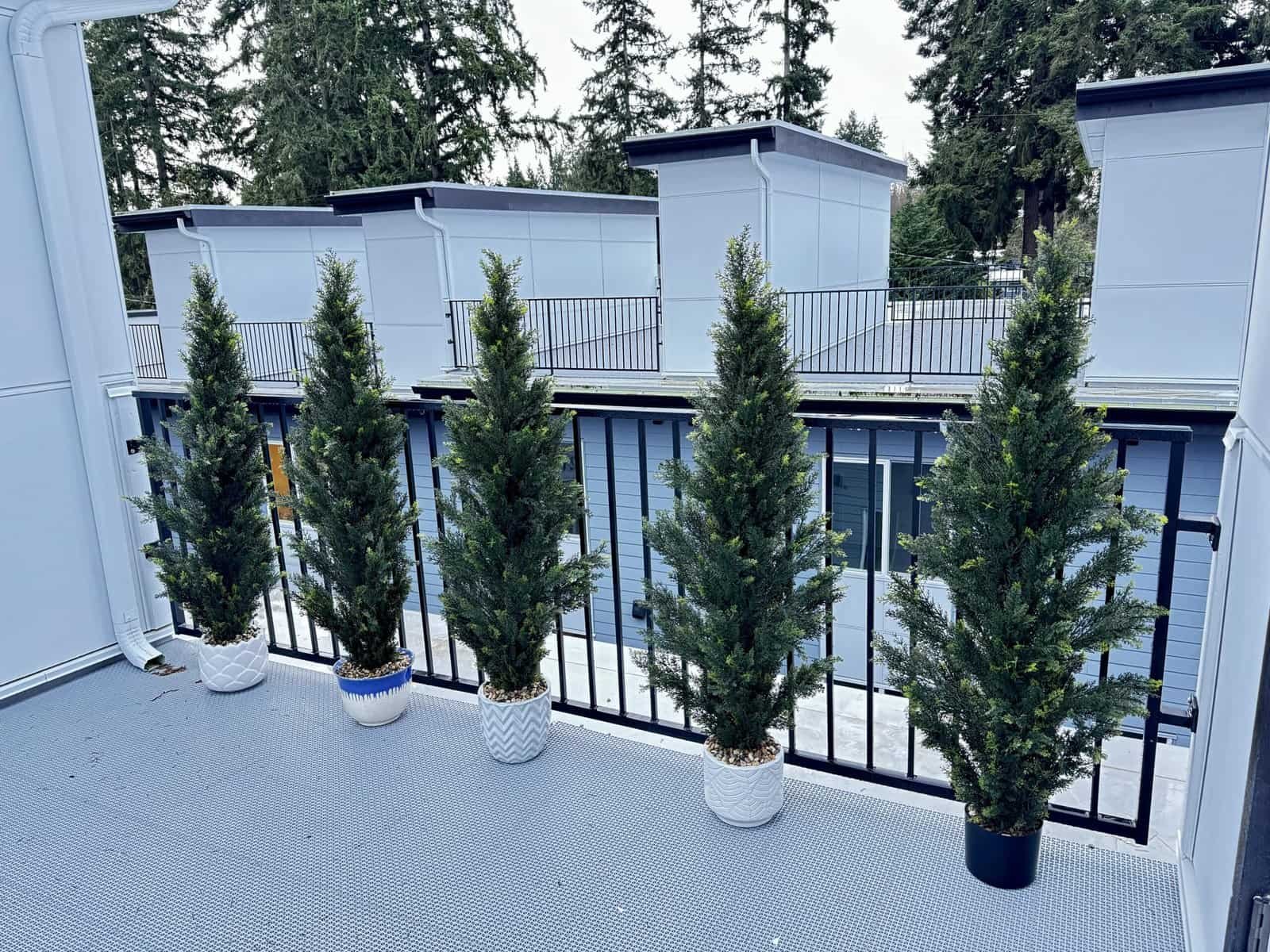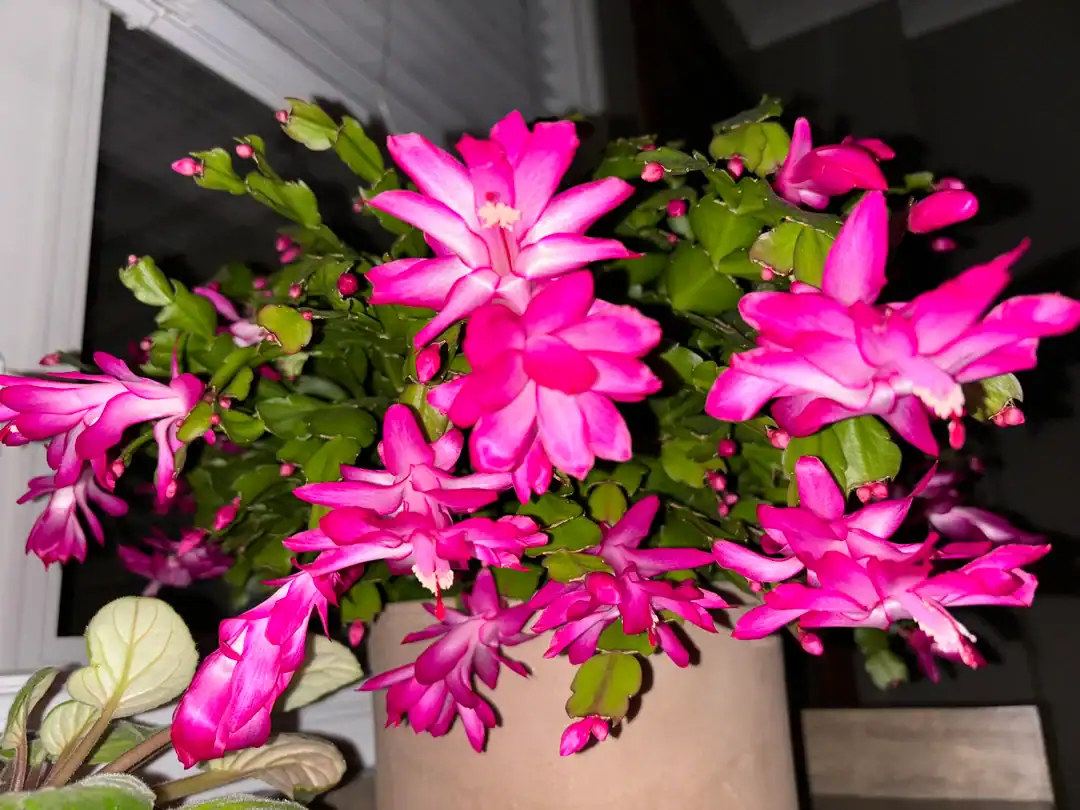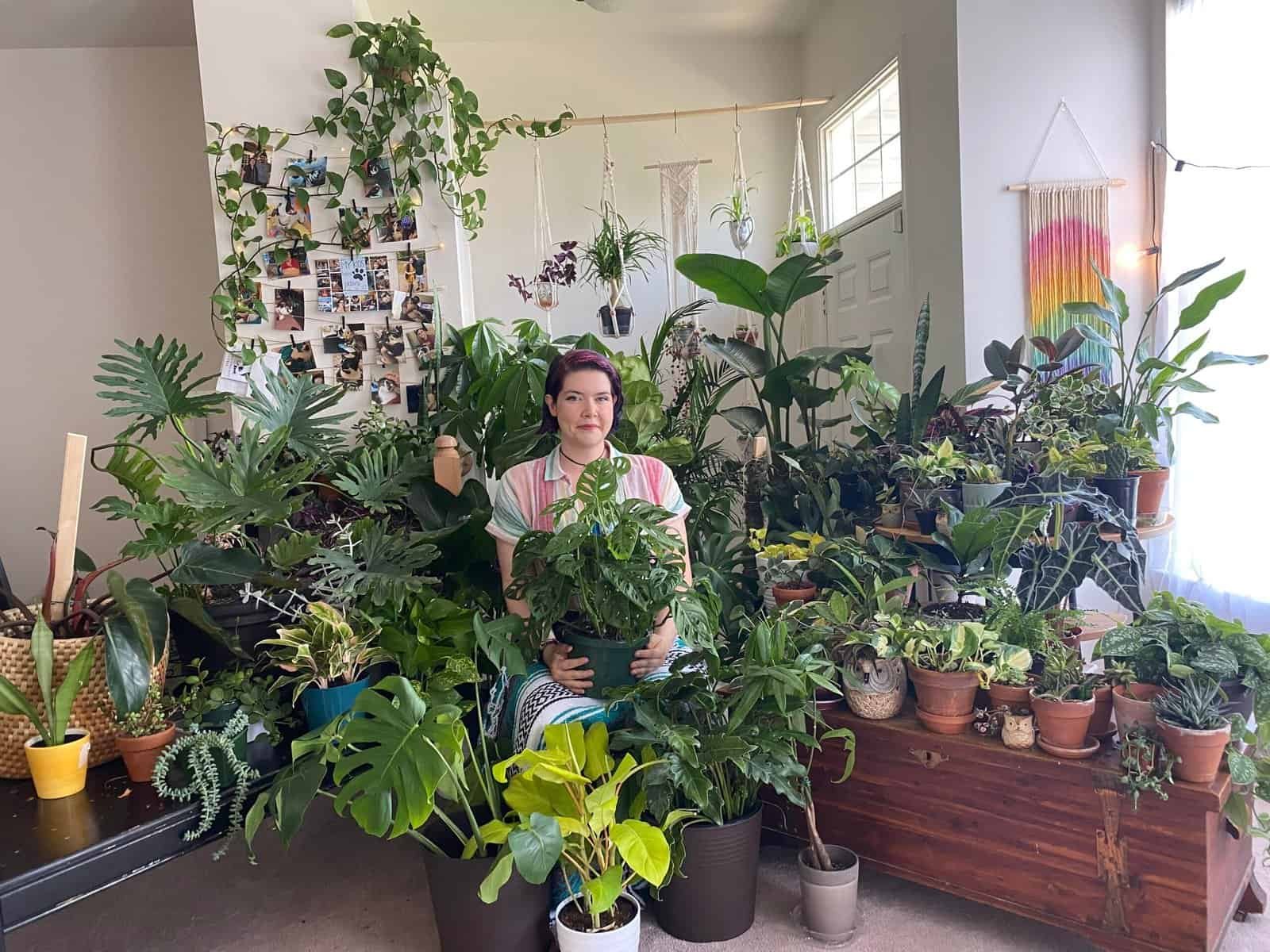Have a good day Gardeners,
Planning your garden space can feel tricky at times. Raised Garden Bed Ideas can help make gardening easier and more beautiful.
Here are 32 creative ideas to inspire you to grow vegetables, flowers, and herbs with style. Keep reading to find your next great garden idea!
Contents
- 1 32 Raised Garden Bed Ideas
- 1.1 Bamboo
- 1.2 Black
- 1.3 Box
- 1.4 Brick
- 1.5 Cedar
- 1.6 Cinderblock
- 1.7 Concrete
- 1.8 Corner
- 1.9 Deck
- 1.10 Deer Proof
- 1.11 Enclosed
- 1.12 Fenced
- 1.13 Galvanized
- 1.14 Hoops
- 1.15 Metal
- 1.16 Painted
- 1.17 Plastic
- 1.18 Railway Sleepers
- 1.19 Balcony
- 1.20 Flowers
- 1.21 Greenhouse
- 1.22 Irrigation
- 1.23 On A Slope
- 1.24 Pea Gravel
- 1.25 Fire Pit
- 1.26 Trellis
- 1.27 Round
- 1.28 Stone
- 1.29 Stucco
- 1.30 Tall
- 1.31 Tiered
- 1.32 White
- 2 Conclusion
- 3 FAQs
32 Raised Garden Bed Ideas
Raised garden beds can transform any outdoor space into a vibrant kitchen garden. From rustic wood to sleek metal, there’s a style for every gardener out there!
Bamboo
Bamboo walls make garden beds feel cozy. I used bamboo from my yard to build mine. It gave a natural look and saved me money.

I added a clear coating to protect the bamboo, so it lasts longer outside. The gardening community loved this idea!

Sandra Barnett shared that she grows radishes in hers, while Martin Lindsay Newton uses bamboo for his herbs. Next, black frames can make raised gardens look sleek and modern.
Black
Sleek black garden beds are a game-changer. They highlight every shade of green and make plants pop. I love how they create clean lines in the yard, giving it a polished look.
These raised beds don’t just look great; they work hard too. They help stop weeds from spreading and save water by keeping moisture in the soil.

I’ve noticed these beds fit well into small or large spaces alike. Their modern style pairs beautifully with vibrant flowers, herbs, or vegetables.
The 32-inch height makes gardening easier on my back too! Ready to add charm? Check out rustic wooden boxes for another beautiful option next!

Box
I love using rustic wooden boxes for my vegetable garden. These raised beds keep everything neat and easy to manage.
The 4×8 layout works great for planting rows of vegetables like tomatoes, carrots, or lettuce. It also helps improve soil drainage and makes watering simple.

Wooden boxes look beautiful in any backyard. They prevent weeds and hold moisture well, keeping the plants healthy. I use timber treated with wood preservative to make them last longer.
Plus, the height saves my back during planting and weeding!

Brick
Brick raised garden beds add structure to any space. Clay bricks are safe for growing vegetables and herbs.
I like how they keep pests out and reduce soil erosion. Bricks also help block weeds, making gardening easier.

Stacking bricks gives a simple DIY option, no mortar needed for shallow beds. Full sun is key, so I always check placement before building.
Using 2×6 boards in brick slots can adjust the height as well. Home Depot sells bricks perfect for this project if you’re ready to start building!

Cedar
Cedar raised garden beds are my favorite for growing flowers and vegetables. The wood stays strong because cedar is rot-resistant and keeps pests away.
Its natural oils protect it from moisture, so it lasts a long time in any weather.

I like how lightweight yet sturdy the cedar boards feel when I build these beds. Using 2-inch-thick boards makes them last even longer.
I also treat mine with Eco Restore Wood Treatment to keep the wood healthy without using harmful chemicals.

These beds add charm while staying safe for my kitchen garden plants! Next, let’s explore budget-friendly cinderblock raised garden beds!
Cinderblock
Cedar beds are strong and elegant, but cinderblocks offer a cheaper option. I see many gardeners use them for herbs or leafy greens. The blocks create neat borders that keep plants in place.
These beds work great for cucumbers and tomatoes too.

I like how easy they are to set up. You can arrange them into different shapes or sizes to fit your space. They last long and help with watering since the structure holds moisture better.
This idea is simple but highly effective for any kitchen garden!

Concrete
Concrete raised garden beds last over 20 years. I like how they stay strong and neat for long-term use. Their smooth walls make rows tidy, which helps with organized planting.
They work well for gardeners who want a clean look and easy upkeep.

I recommend building these with heavy-duty weed barrier fabric inside to stop soil loss. Using topsoil saves money compared to potting soil.
A standard size is 4 feet wide, 16 feet long, and 18 inches high. This gives plenty of room for vegetables or flowers while staying simple to manage.

Corner
Curved corner raised garden beds make great use of backyard spaces. These beds fit snugly into corners near fences, giving the area a neat and modern feel.
The curved shape softens sharp edges and pairs well with sleek fence lines.

Custom measurements help these beds adapt to unique yard layouts. They work for flower gardens, vegetable patches, or mixed planting designs.
Adding them turns an empty corner into a vibrant part of the landscape while keeping everything tidy.

Deck
I love how elevated wooden beds make gardening on decks so easy. These raised garden beds improve drainage and keep weeds away.
They’re perfect for growing tomatoes, leafy greens, or even herbs in small spaces like patios and porches.

The height is just right for tending to plants without bending too much. Adding a cozy bench nearby can make tasks like watering more comfortable.
I enjoy the fresh look they bring to outdoor spaces while producing homegrown veggies all season long!

Deer Proof
Tall mesh trellis frames keep deer away from my garden. The mesh acts as a barrier, blocking access to greens and protecting plants. I use hardware cloth or chicken wire for the best results.
These materials are strong enough to stop even the most curious wildlife.

My raised beds sit on concrete foundations for extra security. This setup keeps critters out while improving drainage too. I added drip irrigation inside each bed, so watering is easy and precise.
With deer-proof designs like this, I can grow more crops safely in my kitchen garden all year round!

Enclosed
I use fully enclosed raised garden beds to keep my vegetables safe. Strong materials like wire mesh or polycarbonate panels stop pests, deer, and critters from sneaking in.
These beds work great for growing leafy greens and other fragile crops.

The enclosures let me control the environment better too. I can add covers to block harsh weather or bugs if needed.
My kitchen garden stays neat and protected this way, making gardening easier.

Fenced
A 32×32 raised garden bed with screened fencing keeps pests out. The fence adds charm while protecting plants from animals like deer and rabbits.
It’s perfect for a kitchen garden or nursery space. Cedar works great for building these sturdy beds, lasting years outdoors.

Plans include measurements and 3D images, making it beginner-friendly to complete in a weekend. I like using hardware cloth at the base to stop burrowing critters too.
A maze design with grassy paths can make your garden stand out beautifully!

Galvanized
I love galvanized raised garden beds. The shiny metal frames look clean and keep weeds out of my vegetables. My Olle bed, with its 60 x 60 x 32-inch size, is perfect for outdoor gardening.
Its cobalt blue color pops in my yard. The powder-coated finish makes it last longer, even in tough weather.

The tall, 32-inch sides make planting easier on my back while allowing deep roots to grow strong.
Assembly was quick and simple too! It also has a drainage hole to help prevent soggy plants.

With a rating of 4.6 stars from over 600 users, it’s clear these beds are loved by many people! Next up: hoops that add support to your garden covers or climbing vines!
Hoops
Hoops are great for raised beds. They hold covers like shade cloth, bird netting, and row covers to protect plants. I use black poly tubing for small plants, which makes hoops 16 inches tall.
For taller crops, PVC pipes work well and can go up to 50 inches high.

Metal conduit lasts longer but needs a hoop bender for shaping. Cattle panels are my favorite since they act as both hoops and trellises for climbing vegetables.
It takes me less than ten minutes to set up adjustable hoops on my garden bed! Different heights help during each season too, making them extra useful in any garden design.

Metal
Corrugated metal beds are tough and last a long time. I like using them because they resist rust and need little care.
Zn-Al-Mg steel sheets work great, especially for food gardens, since they’re safe for vegetables, herbs, and flowers.

The thin sides give more space to plant in the same spot. These beds also warm up soil faster in spring, which helps plants grow early. They can be heavy though; I needed help setting mine up!

Painted
I love painting my raised garden beds with bright colors. It adds so much life to the yard. Flowers and fun designs make them look like art. My neighbors always stop to ask about them.

For vegetables, I avoid painting inside the beds. Paint could leach into the dirt and harm plants. Instead, I use natural wood inside and decorate only the outside walls.

Last year, 57 people reacted when I shared a picture of my painted bed on Facebook! It’s great for themed gardens or even seasonal looks.
Plastic
Bright colors on painted beds bring joy to the garden. Plastic planters, though, keep things light and easy. I like how they’re simple to move around when needed.
These raised garden beds work well for herbs, flowers, or small veggies.

Plastic resists rot and pests better than wood. The built-in water reservoirs save time watering plants too.
Self-watering systems in products like the Keter Splendor help keep soil moist without much effort. Lightweight design makes it great for a flexible kitchen garden setup anywhere!

Railway Sleepers
Plastic planters are handy, but railway sleepers offer a sturdier option. These thick wooden beams make raised beds that last and look great.
I’ve used both new and old sleepers in my garden projects. New ones, like British pine or hardwood, fit different climates well. Used sleepers add charm with their weathered look.

I love how easy it is to find them too. Most garden centers stock sizes around 200x20x10 cm. In “Granny’s Garden,” for example, they built vegetable beds using these sturdy beams.
Hardwood varieties stand tough against harsh weather, while softwood handles mild climates better. They’re simple to install and perfect for rustic designs!

Balcony
Compact wooden beds fit snugly on balconies. These raised garden beds save space and look neat. I like how they use vertical gardening ideas, like trellises, to make the most of small areas.
It’s easy to grow fresh herbs or leafy greens here by using companion planting for better results.

Good soil is key for healthy plants in these beds. I choose lightweight planters that are easy to move around and tailor them to my balcony size.
Bright flowers or kitchen veggies thrive with proper care and smart irrigation systems installed directly in the bed design.

Flowers
I love weathered wood beds for flowers. They feel warm and look beautiful in any garden. These raised beds help reduce weeds and keep the soil moist, which means happy blooms.
I like using both perennial plants and annuals to enjoy color all year long. Mixing heights also makes the bed more eye-catching.

Pollinator-friendly flowers are a favorite of mine too. Bees and butterflies bring life to the space! Proper soil prep is key here; good drainage keeps roots healthy.
Raised beds in my front yard add charm while staying practical for easy care with simple gardening tools like hardware cloth for pest control!

Greenhouse
A sturdy greenhouse keeps the raised beds warm all year. It speeds up soil warming and protects plants from cold weather.
I like how it helps with drainage, keeping roots healthy even in winter months. My herbs and veggies thrive inside, thanks to this setup.

The materials used can vary. Wood, polyethylene, or corrugated metal work well for the frame. Stand-up planters or tiered designs fit neatly into any space too.
Adjustable sizes make them great for decks or patios as well!

Irrigation
A greenhouse keeps plants safe, but proper watering is key for healthy raised garden beds. I use soaker hoses in my wooden beds. They’re cost-effective and great for conserving water.
Sometimes they clog, though, which can be annoying.

Drip lines work well too. They last a long time and are easy to adjust for different bed sizes. The Garden Grid irrigation system also caught my eye once!
It spreads water evenly, giving every plant its share while saving effort. Keeping crops hydrated without overwatering feels simpler with these tools.

On A Slope
Building tiered wooden beds on a slope makes great use of hilly spots. Each bed, about 4 feet by 6 feet, fits snugly into the hillside.
I like using untreated pine lumber for these projects since it’s affordable and safe for plants.

Placing the beds this way helps with sunlight and water flow. Fencing or hardware cloth adds extra protection from pests too.
It’s easy to involve family in caring for these gardens; everyone gets a task! Next up, let me show how pea gravel pathways add charm between raised beds.

Pea Gravel
Tiered beds on slopes increase planting space, but flat gardens need smooth paths for upkeep. Pea gravel works great between cedar boxes filled with fresh greens.
It keeps weeds down and water flowing away, creating a clean look.

I used pea gravel to cover 320 square feet in my garden. It keeps the area mud-free and simple to walk through. I placed mulch around non-path spots for extra weed control.
This design makes moving tools or watering plants so easy!

Fire Pit
A raised garden bed with a fire pit feels like the perfect backyard escape. I can imagine sitting by the warm glow, surrounded by lush herbs and bright flowers.
With proper spacing, it’s super safe and easy to move around. Raised beds frame the area neatly, turning it into a cozy outdoor spot.

I’ve seen setups where greenery wraps around the fire pit in neat rows. It adds charm and makes small spaces feel functional yet stylish.
A mix of vegetables and blooms works great for this layout! It’s such a smart way to combine relaxing moments with gardening joy.

Trellis
I love how trellises make gardening neat and space-friendly. Tall vines like pole beans, peas, or cucumbers thrive with their support.
Their vertical growth saves room for other vegetables in the bed. Trellises also boost airflow, keeping plants healthy after rain.

I always set up the trellis before planting to avoid damaging roots later on. Wire panel trellises work well on wooden raised beds because they’re sturdy and easy to install.
Placing them on the north side ensures sunlight reaches shorter plants nearby. I check my trellis yearly too, making sure it stays strong and stable through all seasons!

Round
Trellis beds make gardens vertical, but round raised garden beds bring a whole new look. I used galvanized fire rings that cost under $45 each to build mine.
They’re deep, about 12 inches, and hold organic waste at the base so I need less soil.

I grew herbs, strawberries, peppers, squash, and tomatoes in them last year. The circular shape keeps my crops organized and looks amazing in my yard.
Adding curved redwood benches made it even better for both style and function! These beds work fast too; I finished one in just over an hour.

Stone
I love the charm of stacked stone beds. They last for centuries and need almost no upkeep.
Natural stones like granite and sandstone work best. These materials are tough, drain well, and stay put without mortar.

I use simple tools to build mine. A shovel, rake, level, and safety gear get the job done. Layering is key for stability; every rock needs a snug fit!
Stone beds give my garden a timeless look that blends beautifully with nature.

Stucco
Stucco walls create clean, smooth edges for raised garden beds. They work great in southwestern courtyards with herbs like thyme and basil.
The texture keeps the space cool and blends well with warm tones of sunny gardens.

These beds improve soil health by allowing better drainage at an ideal depth of 18 inches. With heights up to 2 feet, they make planting easy on your back.
Adding trellises can even help grow climbing plants in smaller spaces.

Tall
Tall raised garden beds make gardening easier on my back. I don’t have to kneel or bend as much since the height can go up to two feet. This makes them great if mobility is an issue.
Cedar wood works best for these beds because it lasts long and is safe for growing food.

The soil in tall beds drains better, which helps plants grow strong. It also stays warmer, so I can plant earlier and harvest later in the season.
With at least 18 inches of depth, roots grow deeper, improving plant health in my kitchen garden.

Tiered
Tiered raised garden beds save space and look great. I use them to grow herbs like basil, parsley, or mint in neat levels.
The setup improves drainage, keeps the soil healthy, and makes planting easier on my back.

Wood works well for building these beds, but stone and steel are good options too. Adding drip irrigation ensures plants get enough water without waste.
These multi-level designs also make my yard more stylish while growing leafy greens or veggies efficiently.

White
Stacking multiple levels of tiered raised beds can be pretty exciting, but crisp white garden beds take it up a notch.
These bright frames pop against green plants and colorful flowers in any front yard.

I love how the clean white color reflects sunlight. It feels modern and fresh while helping plants grow better with more light.
They match almost any style too, from cottage gardens to sleek designs. Using them makes my garden look tidy and stylish without much effort!

Conclusion
Raised garden beds can turn any space into a lush haven. Whether you pick wood, stone, or metal, they fit both function and style. These ideas spark creativity for veggies, herbs, or flowers.
Start small or dream big. Your garden will thank you!
FAQs
1. What are raised garden beds?
Raised garden beds are gardening structures where soil is placed above ground, often within a wooden or metal frame, to grow plants like vegetables or flowers.
2. Why should I use hardware cloth in my raised beds?
Hardware cloth helps keep pests out of your raised beds by acting as a barrier under the soil. It also improves drainage for healthier plants.
3. Can I design a kitchen garden with raised garden beds?
Yes, you can easily create a kitchen garden using raised beds! They’re perfect for growing herbs and veggies right outside your door.
4. What tools do I need to build raised garden beds?
You’ll need basic gardening tools like shovels and trowels, along with materials such as wood or stone for framing and screws or nails to hold it all together.





